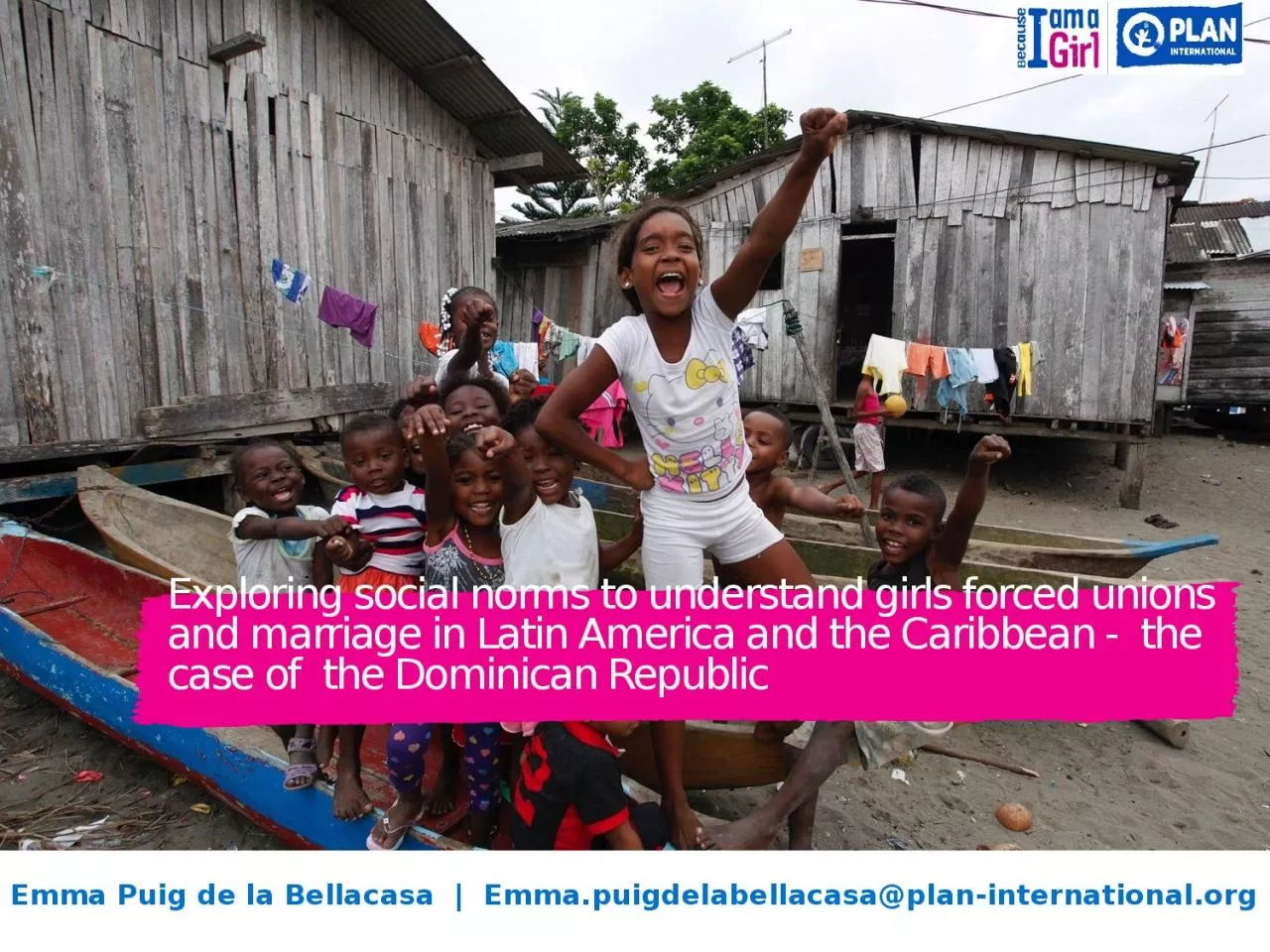

Emma Puig de la Bellacasa Emmapuigdelabellacasaplaninternationalorg 2 METHODOLOGY Gender Transformative Work at Plan International 5 municipalities of 5 provinces of the ID: 932674
Download Presentation The PPT/PDF document "Exploring social norms to understand gir..." is the property of its rightful owner. Permission is granted to download and print the materials on this web site for personal, non-commercial use only, and to display it on your personal computer provided you do not modify the materials and that you retain all copyright notices contained in the materials. By downloading content from our website, you accept the terms of this agreement.
Slide1
Exploring social norms to understand girls forced unions and marriage in Latin America and the Caribbean - the case of the Dominican Republic
Emma Puig de la
Bellacasa
| Emma.puigdelabellacasa@plan-international.org
Slide22
METHODOLOGYGender Transformative Work at Plan International5 municipalities of 5 provinces of the southern region: Azua, san juan, Elías piña, independencia and pedernales 327 participants
Slide3DIMENSIONS OF CHANGE
Dimension 1: Social Norms, Attitudes, Behaviours, and Relations How and why do social norms, attitudes, behaviors, and relations enable or hinder the realisation of children’s right (particularly girls’) to live free from CEFM/EUs? Why? How and why do social norms, attitudes, behaviors, and relations influence the prevalence of CEFM/EUs in communities? Dimension 2: Policy Frameworks and Budgets How and why do the legal & policy frameworks, national budgets and services enable or hinder the realisation of the right to live a life free of child marriage for children, particularly girls? Dimension 3: Social and Economic Resources and Safety Nets How and why do power, interests, abilities and resources (social and economic) at the level of critical actors (e.g. parents/caretakers, religious leaders, parliamentarians, etc.) enable or hinder the realisation of the right to live a life free of CEFM/EUs for children, particularly girls? And across all three dimensions: Do girls face specific obstacles or enablers pertaining to these factors in this particular dimension of change? Why?
Slide4Puts girls and their risk of marriage and unions at the heart of the issue, in recognition of their rights as children, their agency and their potential.
The risk of marriage is determined at a number of levels or spheres of influence. At each level, factors and actors operate to affect a girl’s chance of marrying earlyAnalytical framework
Slide5Research questions
Slide6Research questions
Slide7FINDINGS
Slide8has yet to be recognized as a major issue in Latin America and the Caribbean (LAC),
the region has four countries among the most affected globally over the past 30 years have shown that it is the only region not to see a significant change in rates of CEFM.1 Nearly 1 in 4 girls across LAC are married off before the age of 18.Current estimates vary widely between and within countries, among urban and rural settings, and indigenous groups. The highest prevalence rates can be observed in the Dominican Republic (37%), Brazil (36%), Mexico (23%) and in Central American countries, such as Nicaragua (41%), Honduras (34%) and Guatemala (30%).UNFPA estimated that 45.5 million girls in LAC are likely to marry between 2010 and 2030Section title [enter in Footer field from the Insert ribbon]8WHY expanding to a broader regional study? HONDURAS, NICARGUA, EL SALVADOR, GUATEMALA, BRASIL, PERU, BOLIVIA
Slide9Bringing
Hearts
And mindsTogetherFor children
Thank you.